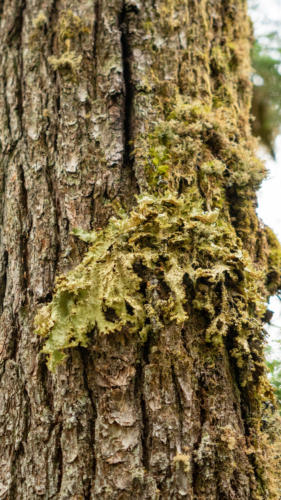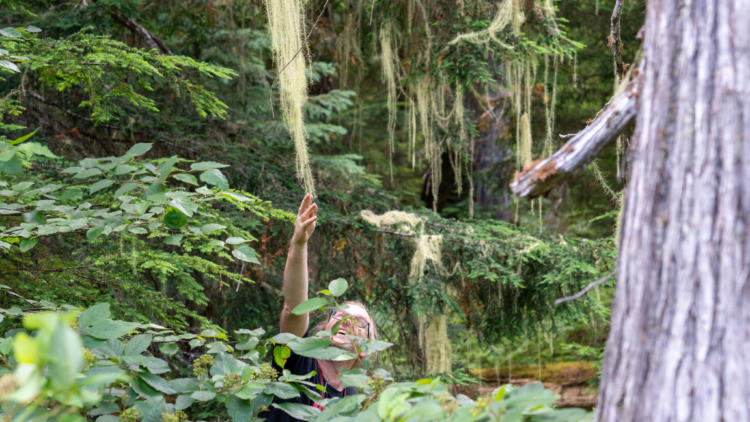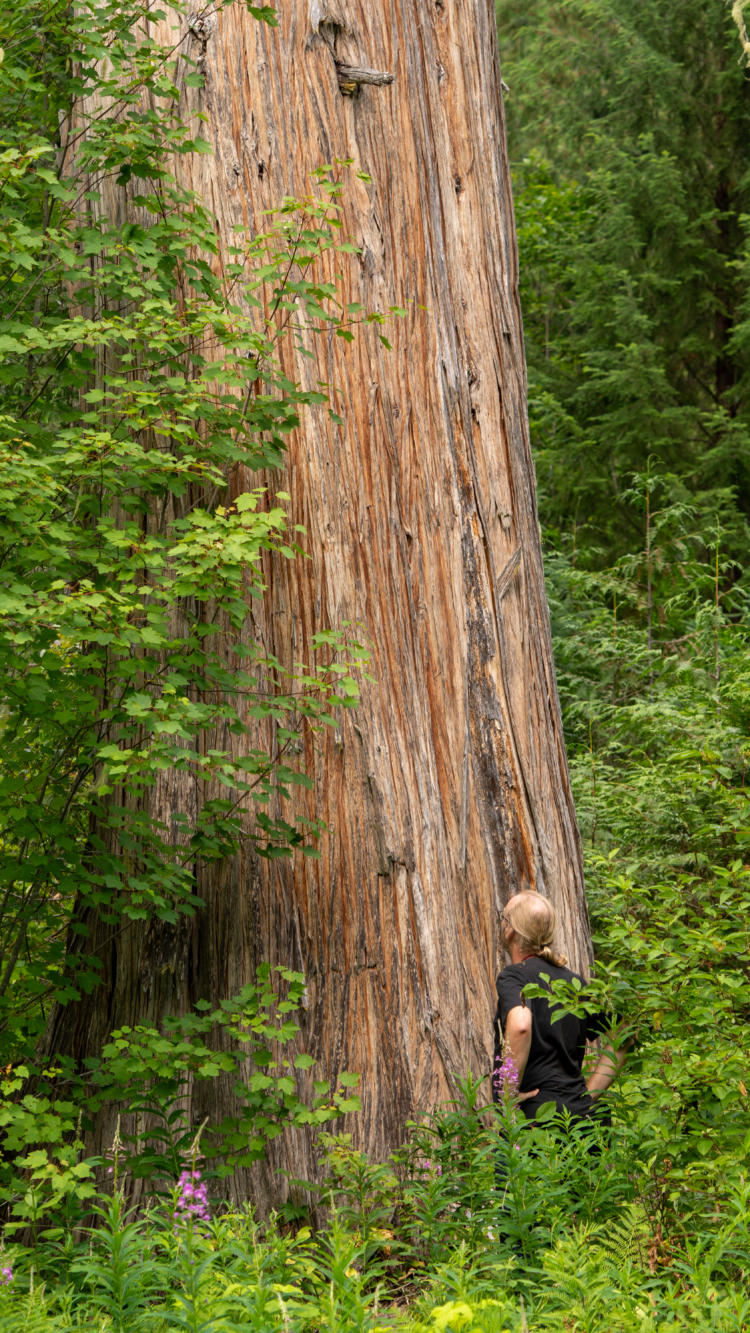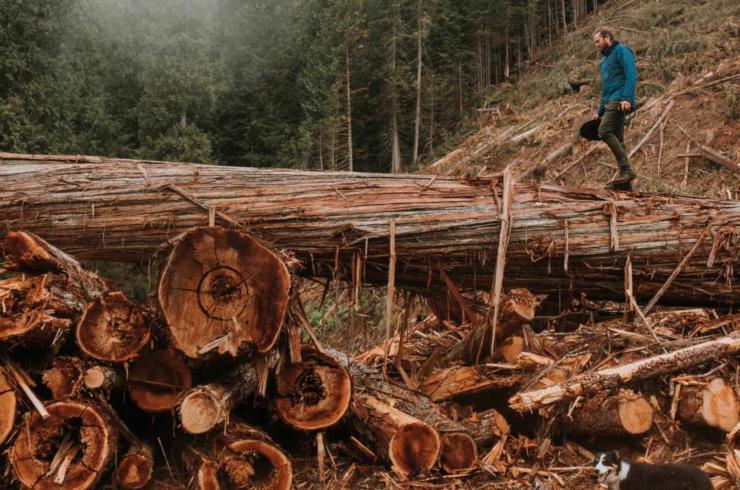At dusk, the rain stops pelting, and we start to see them swooping near the crowns of 600-year-old forked cedar trees. With a stiff wing beat, they sometimes descend together in a spiralling formation. They’re Vaux’s swifts, North America’s smallest swift, measuring a tiny 11 cm in length. Despite short feet and weak legs, these birds migrate incredible distances. Every spring, they make the journey from Central and South America to British Columbia and Alaska to breed, building their nests in the dead, hollow trees of old growth forests. We watch them soar like they’re guardians at the gates of these forests.
It’s July and I’m in the Upper Adams River valley with lichenologist Toby Spribille and his daughter. For the last two days we’ve looked at magnificent old growth forests, bushwhacked through devils club and been eaten by mosquitoes that just won’t quit. We’ve walked giant clearcuts full of what used to be ancient forest, and found rare, old growth-dependent lichens.
Located about 40 km southeast of Blue River, northwest of Revelstoke, the Upper Adams is home to some of the most complex old growth in the Inland Temperate Rainforest. Clearcuts and roads fragment the forests here, but what remains in this low elevation valley is utterly spectacular.

The Vaux’s swifts are soaring over a chunk of forest that contains the only known inland population of a rare lichen known as Lobaria oregana. This small provincial park was created thanks to the work of people like renowned forest ecologist André Arsenault, who discovered this rare lichen in the Upper Adams.
Lichens are incredible nitrogen fixers — cyanolichens convert atmospheric nitrogen into nitrogen that the forest and soil can use to provide the nutrients that they often are devoid of. Typically, that transfer of nitrogen occurs when a lichen falls to the forest floor and begins to decompose. And of all the nitrogen-fixing lichens, oregana is the cream of the crop.
How oregana got into the Upper Adams is a mystery. We’re more than 500 km from the cool, wet coast where it’s relatively common in low elevation old growth forests. But that’s all part of the mystery of the Inland Temperate Rainforest.
Why there are oceanic species 500 to 800 km from the sea is a question that scientists are still unravelling. We’ve long known that there is a close relationship between the coastal and inland temperate rainforests, as almost 300 species occur in both. Recent genomic research has found that western red cedar and hemlock populations in the inland temperate rainforest have been genetically distinct from their coastal counterparts for the last 2.5 million years, putting the timeline for when these two forests diverged from each other somewhere around the beginning of the last Ice Age. As glaciers grew and shrank across the Pacific Northwest, small pockets of both species managed to cling on until they were able to expand and establish widespread populations between 3000 and 6000 years ago. This ultimately provides definitive evidence that the Inland Temperate Rainforest is ancient, different from the coastal forest and harbours unique genetic variation that is not in the coastal temperate rainforest.
We still don’t understand it fully, just as we still don’t understand that within the same rainforests we’re cutting down, there could be the cure for cancer, or a millenia-old caribou migration route, or the homes of hundreds of tiny birds that twice a year make an equatorial flight.

When we were planning this trip, Toby and I had no idea we’d find the forests where Vaux’s swifts are likely roosting. We didn’t know we’d find two hummingbird nests made out of lichens. We didn’t know we’d find caribou poop in a low elevation bog, signalling where the local Groundhog caribou herd crosses to go between seasonal habitats. We didn’t know we’d find the fourth Inland Temperate Rainforest population of the stunning and rare oceanic lichen Usnea longissima. But that’s the magic of these places: you don’t know until you go and experience them for yourself.

And that’s the heart of the issue: we often don’t know what we’re losing when we log in places like the Upper Adams River. We risk destroying their mysteries before we even have the chance to discover, let alone understand them. Globally, the Inland Temperate Rainforest is one of the worlds’ most threatened rainforests, with scientists giving it as little as 10 years before full ecosystem collapse — unless we act now. We must protect what remains of the Inland Temperate Rainforest and restore this ecosystem.









